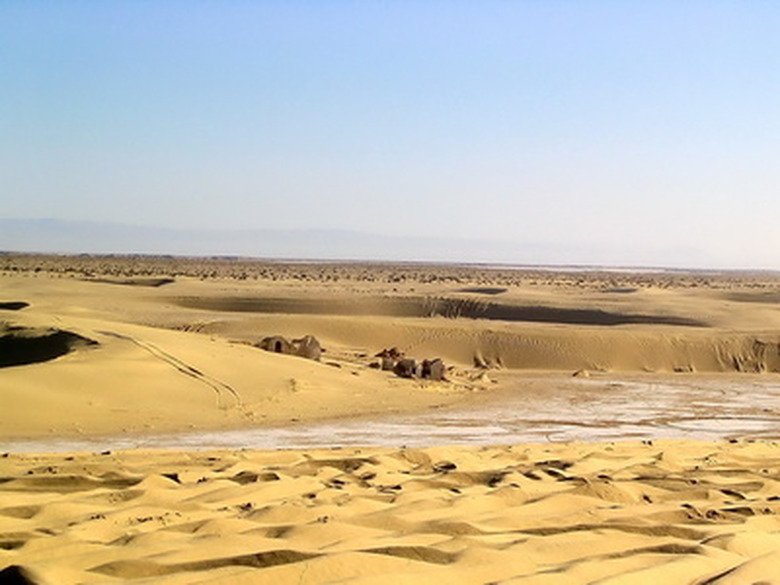What Causes Deserts To Form?
Desert areas distinguish themselves from other areas on the planet by the amount of rainfall they receive in a year. The stereotypical image of a sandy, windswept desert comes to mind, but deserts can be barren and rocky with no sand. Even Antarctica, with its constant snow and ice, falls under the category of a desert. Three causes of a lack of moisture contribute to the formation of deserts.
Mountains
Mountains
When air makes contact with mountains, it has to rise above them. As it does so, most of its moisture precipitates onto the mountains and creates snow on the peaks. As the air mass moves farther inland, it has little moisture left, so the amount of rainfall decreases, according to The Wild Classroom. Several examples of deserts formed by mountain ranges exist in the world, such as the Gobi Desert north of the Himalayas or the deserts of Nevada east of the Sierra Nevada Mountains.
Air Pressure
Air Pressure
According to the New Mexico State University College of Agriculture, most desert areas in the world lie in a belt 25 degrees to either side of the equator. In these areas, the atmosphere has high pressure. High-pressure air forces low-pressure air–usually dry air at higher altitudes–closer to the ground. Because low-pressure air has little moisture and exists near the ground, the sun can heat it easily. This heat transfers to the ground, creating high ground temperatures. The Sahara Desert and the Kalahari Desert, both in Africa, formed as a result of low-pressure air heating the ground and evaporating groundwater.
Cold Air
Cold Air
Near the poles, little rainfall occurs because of the extremely cold temperatures. Rainfall requires an evaporation of groundwater or ocean water, and these areas don't receive enough sunlight to cause evaporation. Antarctica could be considered the largest desert in the world.
Cite This Article
MLA
Smathers, Michael O.. "What Causes Deserts To Form?" sciencing.com, https://www.sciencing.com/causes-deserts-form-7218824/. 22 November 2019.
APA
Smathers, Michael O.. (2019, November 22). What Causes Deserts To Form?. sciencing.com. Retrieved from https://www.sciencing.com/causes-deserts-form-7218824/
Chicago
Smathers, Michael O.. What Causes Deserts To Form? last modified March 24, 2022. https://www.sciencing.com/causes-deserts-form-7218824/
